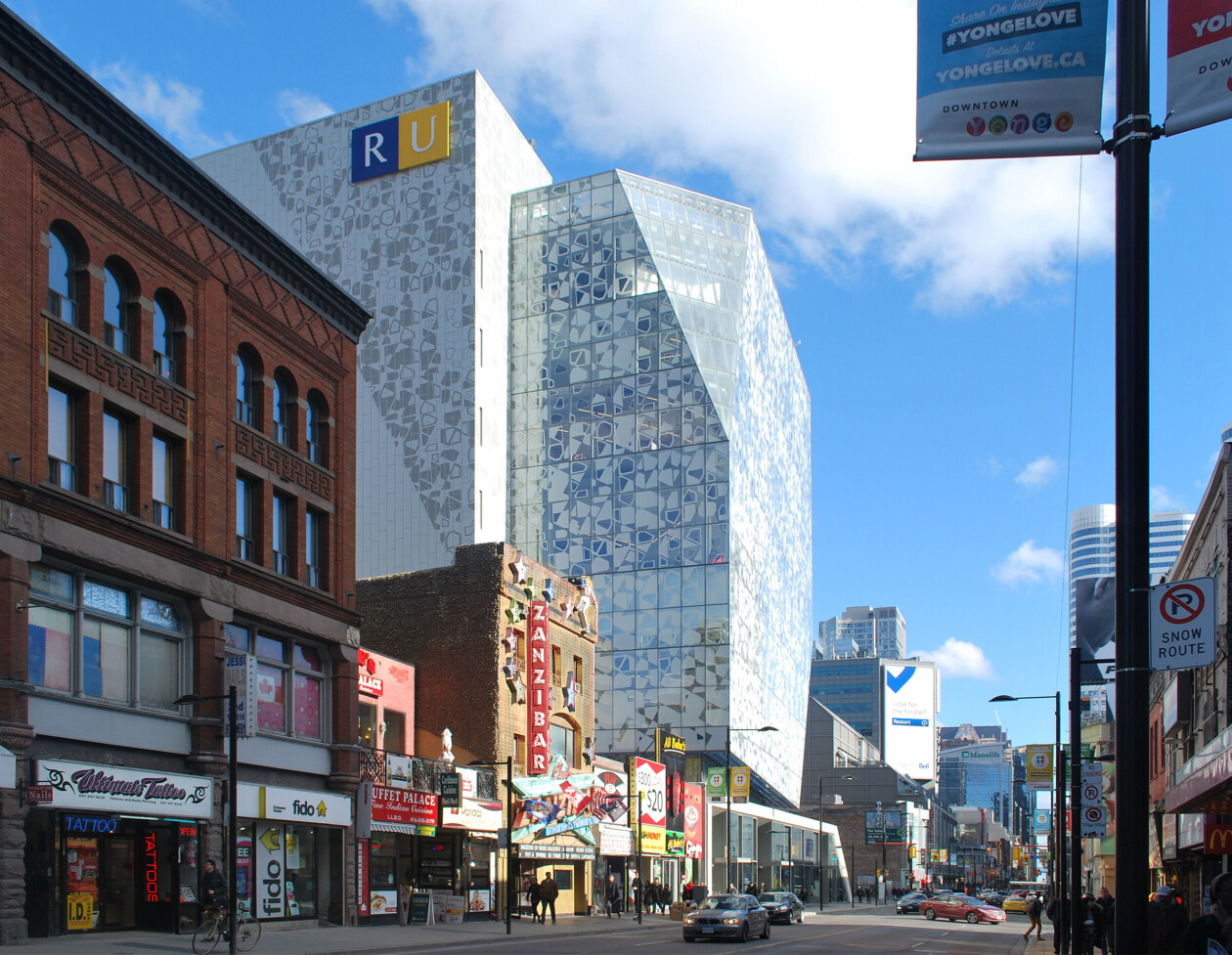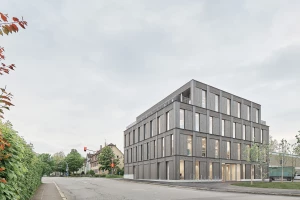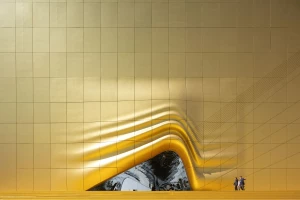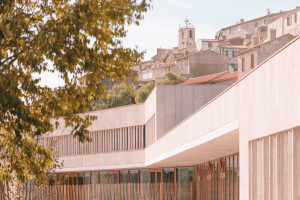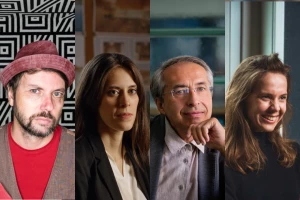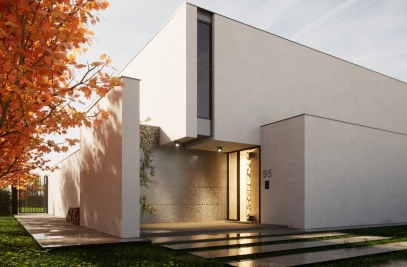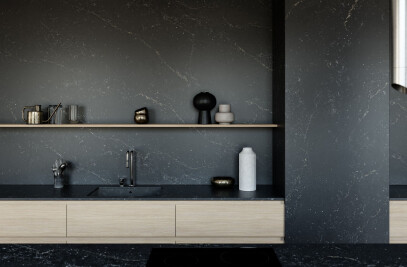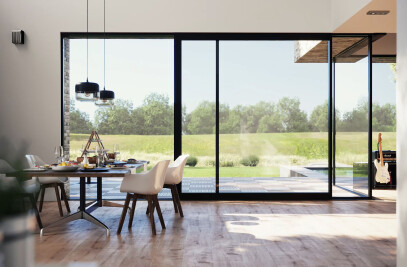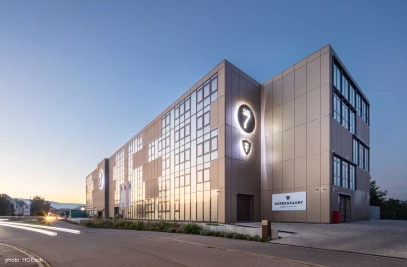There are many advantages to using glass as a building component: natural light and exterior views are just two reasons. There are also many disadvantages, including the build-up of heat and a lack of privacy. The latter issues can be resolved by using glass printed with a ceramic frit — once tempered, it becomes a permanent and durable coating. Ceramic frit glazing reduces glare and cooling costs, and can enhance a building’s privacy and its outward decorative form. It is also a simple way to make a building bird-friendly, with the glass more visible to our feathered friends.
Ceramic frit glazing varies from practical and simple to more intricate designs. The following projects showcase a range of applications across public and institutional buildings.
1. Springdale Library and Komagata Maru Park
Toronto-based architectural studio RDHA collaborated with a generative design specialist at the University of Toronto to craft a solar-responsive ceramic frit glass for the city of Brampton’s Springdale Library. In the glass, “striated patterns range from white to dark gray, expanding and contracting based on solar orientations,” explains RDHA. Perhaps in a more novel sense, the ceramic frit pattern is designed to evoke the idea of pages turning in a library book.
2. Idea Exchange Old Post Office
In this project in Cambridge, Ontario, also by architectural studio RDHA, stone patterns on the historic post office’s facade inspired a custom ceramic frit pattern on the glazing. The glazing acts to reduce solar heat gain.
Designed by Steven Chilton Architects, the full-height glazing of the Wuxi Taihu Show Theater in Jiangsu Province, China, is fritted with white and gold stripes. These stripes resemble bamboo columns and are a nod to the bamboo forest that borders the theater's outer edge.
The Columbia Business School in New York was designed by New York-based Diller Scofidio + Renfro in collaboration with Brooklyn-based FXCollaborative. The school comprises two buildings, with one containing alternating floors of faculty offices and student learning spaces. Inset from the edge of the floor plate, the student floors and ground floor spaces feature transparent glazing. Conversely, the faculty floors feature fritted glass that protects from heat gain.
5. Ryerson University Student Learning Center
The facades of Ryerson University Student Learning Center (also top image) are made up of a digitally-printed fritted glass. Designed by Norwegian architectural firm Snøhetta and Canadian firm Zeidler Architecture, the center’s dynamic fritted glass pattern controls heat gain and modulates the amount of natural light that enters the interior — “from ‘overcast’ to ‘partly cloudy’ to ‘sunny’” — while framing views of the city streetscape.
Designed by Dutch architectural practice Wiel Arets Architects, Utrecht University Library’s fritted glass panels are decorated with the abstract image of fossilized papyri. This fritted glazing softens the amount of natural daylight, thereby protecting the library’s books.
The Design Museum in London is housed in the former 1960s Commonwealth Institute. The redevelopment of this listed building was overseen by Dutch architectural practice OMA in collaboration with English architectural firm Allies and Morrison and English architect John Pawson. The design retained the building’s unique saddle-shaped, double paraboloid roof. Maintaining the pattern of the original fenestration, the blue-fritted glazing recalls the Commonwealth Institute’s previous blue-grey glass.
Sattva Galleria in Bengaluru, India, is a mixed-use development designed by Bengaluru-based Sudhakar Pai Associates. The building’s foliage-patterned ceramic frit glazing works to temper both light and heat — it also pays homage to Bengaluru’s reputation as a “Garden City”.
9. E.J. Ourso College of Business at Louisiana State University
Designed by New York-based ikon.5 architects, the E.J. Ourso College of Business at Louisiana State University features yellowish ceramic fritted glazing with a mirrored glass back panel. This creates a moiré-like (rippled silk) pattern, resulting in a three-dimensional appearance.
10. 7 St. Thomas
Designed by Canadian architectural firm Hariri Pontarini Architects, 7 St. Thomas is a mixed-use development that integrates six Victorian townhouses into a three-story podium, with a six-story glass tower. Appearing to float above, the tower is wrapped in an undulating fritted glass veil that reduces thermal transmission. The glass includes white frit lines that create a gradient fade and add a contemporary aspect to the building’s exterior.
